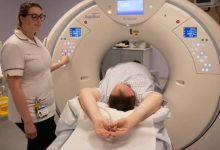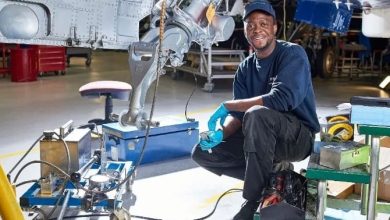What to Buy Before Starting Medical School

Congratulations on your acceptance to medical school. Continue reading for a list of items to purchase before beginning medical school.
Before enrolling in medical school, there are a few things you should get.
Stethoscope
There is no doubt that every medical student requires a stethoscope. But do you need a truly good one to begin with, or just a good-enough one? It depends on how much money you’re prepared to spend right now: a basic one, such as the Littmann Classic II SE, will likely suffice for medical school, but you’ll eventually need to upgrade before you qualify. It is entirely up to you whether to invest now or later. Some claim that your ability to auscultate is limited until you start with a high-quality stethoscope, while others disagree.
Related Post:How to become a Medical Assistant
Sphygmomanometer
Learning to do a blood pressure test is usually the first clinical skill you’ll acquire in medical school, and it’ll be put to the test in clinical exams every year until you graduate. If you have your own Sphygmomanometer, you’ll have a far better chance of getting it right the first time. Every willing subject can be practiced at home. The sooner you can take a precise and flawless blood pressure reading, the better your clinical examinations will go.
Ophthalmoscope
It isn’t necessary for this to be the best ophthalmoscope available. Unlike a stethoscope, you may never need to use one again depending on which specialization you choose. Rather, invest in a reliable, easy-to-use ophthalmoscope. One that can be used in place of an otoscope, which brings us to…
Otoscope
Purchase a conventional otoscope that is easy to use, similar to an opthalmoscope. One in which you can see the entire eardrum and ear canal and become accustomed to navigating the ear canal. You’ll learn how to use an otoscope in medical school, and after graduation, you’ll really start to hone your skills. Otoscopes will be used on a regular basis if you become a General Practitioner (GP) or Family Doctor. We propose purchasing a set of interchangeable otoscope and ophthalmoscope heads.
Tendon Hammer
These are an important aspect of any clinical neurological assessment, as well as upper and lower limb examinations. You’ll be expected to use these from the beginning. We recommend choosing one that is tiny enough to fit in your purse because it is one of those items that you will need at any time. Some people may be able to get away with not getting one during medical school, but once you graduate, having your own will save you a lot of time. Tendon hammers are notoriously hard to come by on hospital wards, and having to go out of your way to get one – or worse, waiting for a colleague to finish using the shared tendon hammer – wastes time that could be better spent elsewhere.
Ward shoes that are both comfortable and stylish
Few people are prepared for this, but it is something that can be learned quickly! During medical school, you’ll spend a lot of time on the wards or in clinics just standing around and watching. Perhaps for several hours. Those trendy shoes become unfashionable soon, and they are quickly replaced with more comfortable ones. Avoid blisters at all costs!
Stethoscope Case
If you’ve decided to invest in a high-quality stethoscope, you’ll want it to endure a long time. (And, let’s face it, even the most basic ones are expensive.) You’ll be throwing your stethoscope around hundreds of times during medical school; do yourself a favor and acquire a case for it. Only a missing stethoscope is worse than a beaten and broken one.
Stethoscope Tag
You’ll use your stethoscope numerous times a day, and there’s a danger you’ll lose it every time you set it down. Aside from color, stethoscopes all appear quite identical, so don’t be fooled. We’ve all heard stories about long-lost stethoscopes being traced back to their rightful owner thanks to a name tag or inscription.
Highlighters and colored pens
You’ll build your own highlighting or underlining system over time, although I believe practically all of my pals use different colors of highlighters for different purposes. I personally use different colors to underline or highlight different topics (all medications are green, all enzymes and mechanisms are purple, diseases are blue, and so on), but a friend of mine uses a different color each time she reads over stuff to keep track of things that stand out. Purchase a large quantity of colorful pens and highlighters.
Related Post:Harvard Medical School Acceptance Rate
Excellent tablet or computer
This is critical in today’s educational environment. There are less and fewer physical textbooks available, with more online texts, courses, and videos available. I spend most of my day studying on my iPad or computer. My school actually compelled us to take all of our tests on an iPad. I have friends that love their iPad and use it for everything, especially now that the iPad Pro is available! Between my first and second years, I bought a new MacBook because my old one was dying and I didn’t like using an iPad all the time. For studying, I use my MacBook or iPad on a daily basis!
Scrubs
It’s almost as though this is a no-brainer! Because my school required us to wear scrubs to class, I had several sets of scrubs when I first started. Some of my friends at other schools, on the other hand, didn’t have to wear scrubs, so if they had a shadowing opportunity and required them, they had to scurry to find a pair. Find out whether your school has a certain color requirement, and then get a pair or two of incredibly soft socks! (Medelita’s Modern Fit scrubs are noted for being exceptionally soft, so if they have a color you require, that’s a wonderful alternative!)
First Aid for the USMLE Step 1
I didn’t buy this until the end of my first year, but looking back, I wish I had gone through the things we covered in first year to have a sense of what I needed to remember long term for board exams. It was especially useful during my second-year systems courses, but I wish I had skimmed over microbiology and biochemistry during my first year. I strongly advise you to take your book to Office Depot and have it spiral bound!
Phone charger on the go
Okay, I know this sounds dumb, but for whatever reason, outlets aren’t always readily available in many places, and having phone apps at your disposal to seek up drugs, facts, and other information is quite useful. My phone died at the most inconvenient of times. On Amazon, I purchased a $12 portable charger, and it has actually saved my life numerous times. (If you’re curious about which applications I use, Up to Date, Epocrates, Essential Anatomy, and Firecracker are among my favorites.)
A good place to study
This one appears to be self-explanatory as well, but I cannot emphasize how critical it is! The first year, I struggled a lot to locate the proper place to study. To maintain it nice, I got a nice desk, chair, and lamp for my bedroom, as well as candles and coasters for my drinks. When I wanted a break from studying, I went to the library. Being around other people who were studying the same stuff as myself was both motivating and useful when I had questions. Find your study locations early, whatever your study style is!
An opportunity to clear your mind
Getting away from the stress of medical school every now and then is critical to your success. Perhaps the gym, video games, a Netflix show, or the beach are your escapes. You must have something that allows you to forget about your schoolwork and makes you joyful.
Me? I go to the gym frequently, but my true escape is being outside—going to the beach, playing soccer, rollerblading, and so on. Make sure you have a way out to stay sane during medical school!
List of Study Tips for Medical School
Continue to attend your classes.
There are usually only a few exams per class in college, and each one assesses you on a little amount of material. While cramming the week before the exam is not recommended, it is possible.
Things are different in medical school. Exams are given far more frequently—every three or four weeks on average—and the amount of content covered on each exam rivals that of a college final exam. This is why it is critical not to fall behind in medical school.
At least three times before each exam, study your notes from each lecture: once the night after the lecture, once the following weekend, and once in the days leading up to the exam. Maintaining this routine will assist you in mastering the material covered in class.
Even if you prefer an alternative study regimen, don’t try to cram in the days leading up to the exam. You might be able to pull it off once or twice, but medical school exams include far too much material for this method to be sustainable.
Use practice questions to your advantage.
While understanding the content in your lecture notes can get you far in medical school, testing yourself frequently is an even better method to learn. Completing practice questions in the week leading up to a test will help you reinforce key concepts and identify any knowledge gaps, giving you an idea of how to spend your remaining study time. Questions can be found in a variety of places, including online resources and former tests from your institution.
Making practice questions a regular part of your studying routine will also help you prepare for the rigors of board exams. However, don’t start using board-specific study tools too early in medical school. Save those materials until you’re ready to start studying for your board examinations.
Make sensible resource selections.
While college can be challenging, you usually have a good idea of what you need to prepare for tests. However, in addition to lectures, allocated texts, and problem sets, you’ll find yourself accessing a wide array of other outside resources throughout medical school.
It’s easy to become overwhelmed when there are so many materials available. Concentrate on lectures, readings, and problem sets, and refer to outside resources for clarification and crystallization. When you do consult outside sources, limit yourself to one or two at most.
Examine the value of study groups.
Study groups can help clarify difficult concepts in college, where much of the learning is conceptual. Study groups are less beneficial in medical school because the content there requires more memorization than conversation.
As a result, you’ll probably discover that studying on your own is more efficient. Study groups can still be beneficial in terms of social support, but ask yourself if they’re worth the time commitment.
Accept your weaknesses.
In medical school, unlike in college, it is not always possible to memorize all of the knowledge examined on tests. However, if a concept or piece of information is critical to your education, you will encounter it numerous times during your study.
Try your hardest to learn as much as you can before the examinations, but don’t panic if you can’t master everything.
Keep in mind to unwind.
Medical school is an exciting time in a physician’s life, and you should try to take advantage of any opportunity that comes your way. As a result, you’ll be busy all of the time, and it’s easy to grow overwhelmed.
One of the most crucial but often forgotten medical school study recommendations is to set aside some time each week to focus on yourself in order to safeguard your mental health. Designating a Saturday afternoon free of studying or work will allow you to recoup from the stress of the previous week and prepare for the coming week.
Even while medical school can be intimidating, the good news is that the majority of students graduate. According to the Association of American Medical Colleges, over 96 percent of students at American allopathic medical schools earn their MD within six years after entering. Strategies that allowed these students to learn the large amount of information required to become a physician in 21st-century America helped them succeed. While you should begin with the tactics outlined here, you should also speak with your peers—particularly older students—to discover what has worked for them. Also, don’t be hesitant to try out different study strategies to see what works best for you.
Related Post:Top Medical Schools in Pennsylvania









